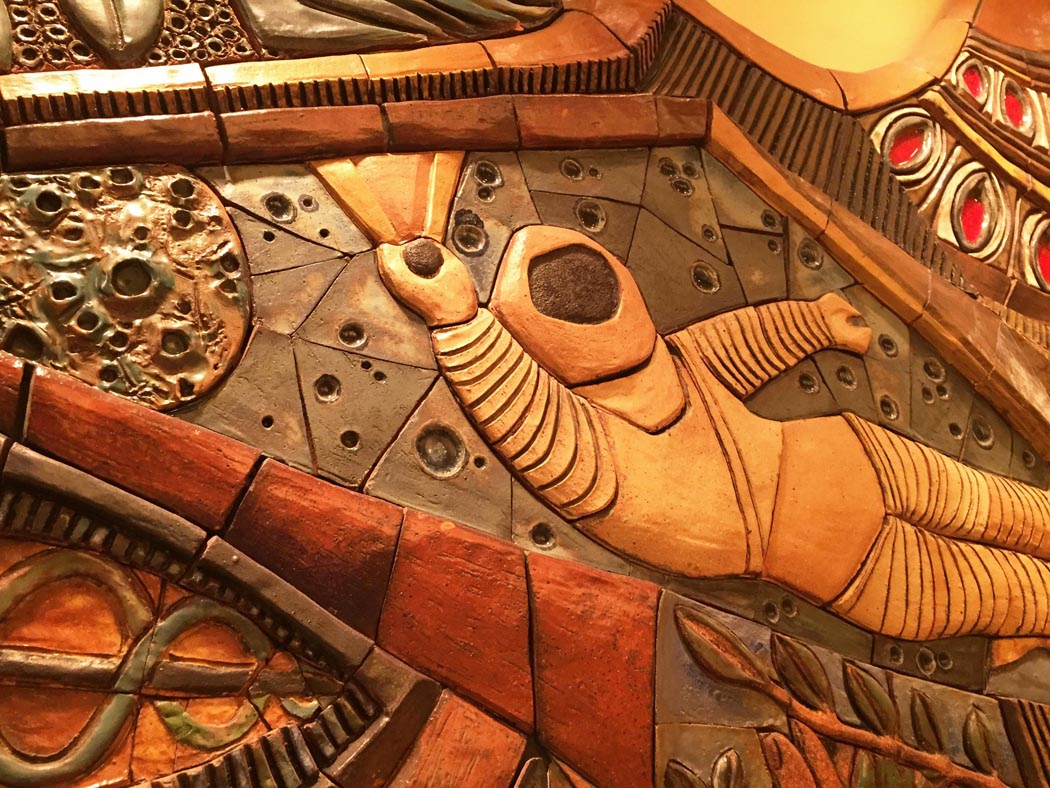Grand Guru of Clay - Page 4
 |
 |
|
|
 |
|
|
"He was very gregarious," Matranga recalls of his ex-boss. "You had a lot of fun working in his shop. It was kind of loose, in a way. You did what he wanted you to do. But he respected me as an artist. He would show me things he was doing and ask my opinion. He would take it sometimes, and sometimes he wouldn't."
"The sgraffito designs were just excellent," says Brent Bennett about the incised designs. Today Bennett's a veteran potter, but in the late 1950s was Coronel's assistant. Bennett praises Coronel's "intricate line work, [and] finishes that were beautifully done, colorful, and unique."
Coronel says he was influenced by African and Greek art, and says he's borrowed ideas from many contemporaries. But his biggest influence was Mexican and Mesoamerican art. "Because no matter what I've done, or where I've been, or what I've learned," he says, "I am basically Mexican, so that's all there is."
Although much of Coronel's work was abstract, one notable piece for a Fort Worth bank is a family group—father, mother, and child. "It was a challenge," Coronel remembers. "Someone says, do you do realistic? Sure. Do you do abstract? Sure."
But Coronel didn't always do exactly as he was told. His promotional material made clear how he wanted to deal with clients—take in their ideas, and then work with a free hand.
"He set the criteria for what was going on," says interior designer Suzanne Faulkner, who found many clients for Coronel, including one of his most important, the Hotel Wilshire. "If a client wanted something else, [Coronel] would explain why that was incorrect."
But in general, he did not grate. "He was a very good-looking man, tall and handsome, and the women all liked him," Faulkner says.
When Stoneware Designs West needed more space, they moved into the heart of Los Angeles' Design District. His shop attracted high-end interior designers and architects. "People would drop in and go bananas," Bennett remembers.
Clients included Lytton Savings and its chief, Bart Lytton; Mattel Toys; architect Welton Beckett; hotelier Barron Hilton; McDonnell Douglas and Fluor Corporation; the Palm Springs Racquet Club; and Miles Laboratories in Indiana, whose cafeteria got a 70-foot-long, three dimensional ceramic mural showing the history of medicine.
According to one newspaper report circa 1965, Coronel had created 150 private commissions in a dozen years, on top of production goods and individual sculptures.
But the ceramics business wasn't always pretty, Coronel recalls. He wrote about it in a strange roman a clef, An Idol for Sheila Machen, a murder mystery in which the victim is Coronel himself.




